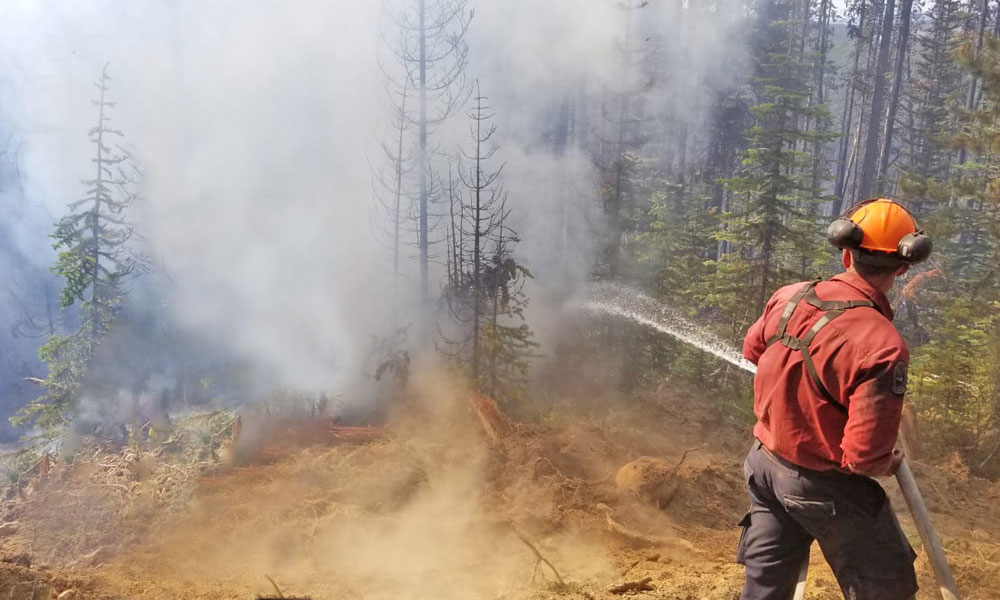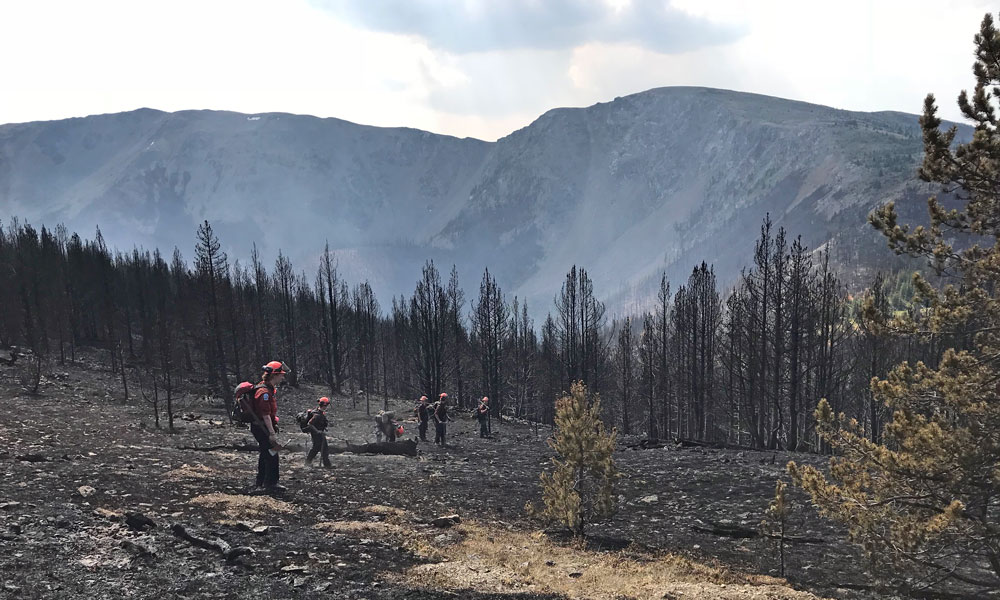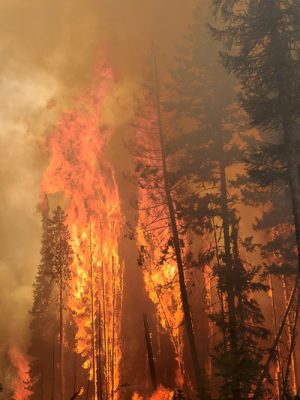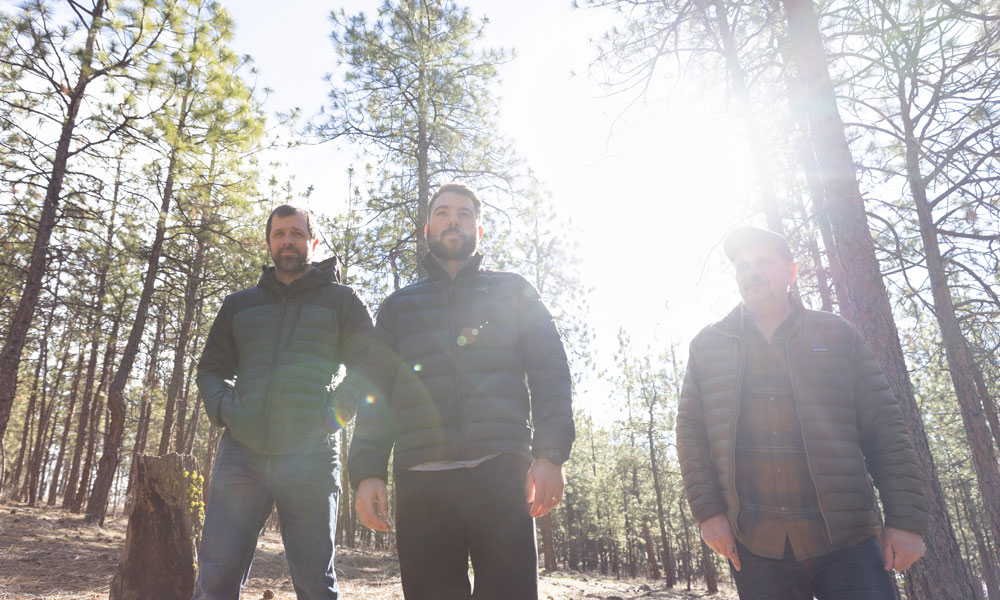THE STUDENTS EYED THEIR CLASSMATES AND THEIR INSTRUCTOR SUSPICIOUSLY—one of them was an imposter. Not many students have the opportunity to attend class aboard a virtual spaceship in a life-or-death situation, but Dr. Firas Moosvi’s class isn’t like most others.
Dr. Moosvi—a Lecturer in the Irving K. Barber Faculty of Science—believes in meeting students where they are and using technology to improve the learning experience. So, when his students repeatedly asked him to play the popular online game Among Us, Dr. Moosvi made it happen and created a memory that he and his students will never forget.
Growing up, Dr. Moosvi always wanted to become a scientist, though it took him some time to find his specialty. “I used to get chemistry books for kids, where you mix home chemicals to see the reactions,” he laughs. “The thing I wanted to do as a child, I’m now doing as an adult but in a very different way than I expected.”
After completing his doctorate in Physics—during which he conducted experiments using a magnetic resonance imaging scanner to research the effect of anti-cancer drugs—Dr. Moosvi’s focus has now shifted to study how students learn and the importance of having a growth mindset. Dr. Moosvi credits several important mentors who opened his eyes to interdisciplinary research and fostered in him a love of teaching and learning.
“Learning is failing productively. The process of learning is so much more important than a grade. I want students to like the process of learning, even if they don’t connect with the material.”
As he reminisces about his time as an undergraduate student, Dr. Moosvi recalls the difference an extraordinary instructor can make. “Organic chemistry wasn’t my favourite subject, but I went to every single class because of the interactions with the instructor,” he recalls. “She would ask us questions during class, value our input, and then adjust her lessons accordingly. She also encouraged us to think about our own process of learning—called metacognition—and this was very shaping for me.”
Now as an educator, Dr. Moosvi hopes to pass on his love of learning to his students and teach them to value discovering new things. “Learning is failing productively,” he reveals. “The process of learning is so much more important than a grade. I want students to like the process of learning, even if they don’t connect with the material.”
This sense of passion and motivation for his students is just one of the reasons Dr. Moosvi was recently awarded UBCO’s 2022 Provost’s Award for Teaching Excellence and Innovation. He brings an interdisciplinary perspective to teaching as he looks for ways to improve both his teaching methods and the overall systems in place, collaborating closely with colleagues to see how they can align their practices to provide a better experience for students.
One area Dr. Moosvi is passionate about is encouraging students to focus on learning instead of grades—a seemingly daunting and insurmountable task, especially when society’s systems, structures, and policies are centred around grades and the fallacies of their inherent “fairness.” Dr. Moosvi points to a quote by American author and lecturer Alfie Kohn as central to his philosophy on grades and learning: ‘Research shows three reliable effects when students are graded: They tend to think less deeply, avoid taking risks, and lose interest in the learning itself.’”
“As an institution and as a society, we need to refocus our students’ attention on rich, high-quality feedback rather than grades. This will require critical work and broad structural changes to our systems to re-centre higher education on learning.”
Dr. Moosvi adds: “As an institution and as a society, we need to refocus our students’ attention on rich, high-quality feedback rather than grades. This will require critical work and broad structural changes to our systems to re-centre higher education on learning.”
He believes changes are also needed to ensure universities have the structures in place to support equity, diversity, and inclusion. Grades, admissions processes, and restricted class sizes are all part of the larger issue of inequality in higher education. “We need to transform our education systems to better support students and ensure that more students succeed,” he explains. “Learning technologies, such as the Jupyter project, OnTask, PrairieLearn and Gradescope play a huge role in how we can get more people through our doors and reduce barriers to a quality education.”
Rather than smaller classes, Dr. Moosvi hopes to see larger classes in the future—with the technology-driven solutions that will allow educators to continue delivering exceptional educational experiences to more students. “My primary responsibility as an educator is to help students build relationships with each other and with me so we can go on a learning journey together, as a community. This community-building helps us feel like we’re part of something bigger than ourselves.
“With everyone’s help, I hope we can also get to a place where past privilege matters less. In my courses and at my university, I want to be a major driver of that change.”
The post Dr. Firas Moosvi builds community in large classrooms appeared first on UBC Okanagan News.




